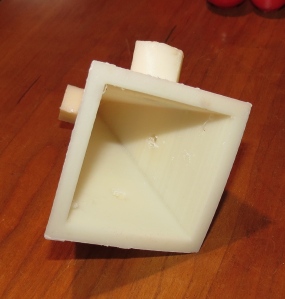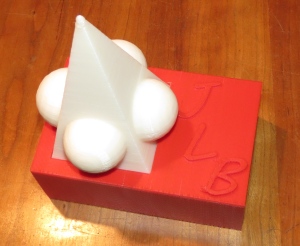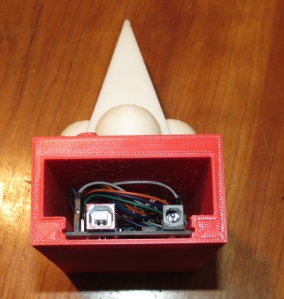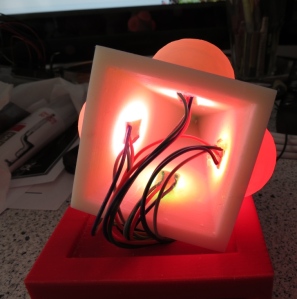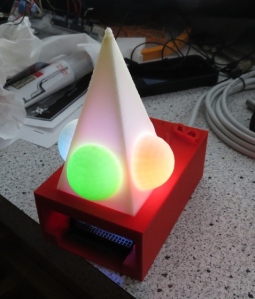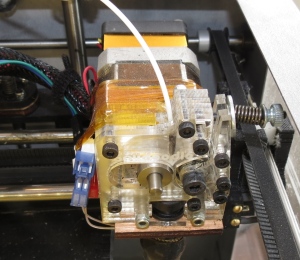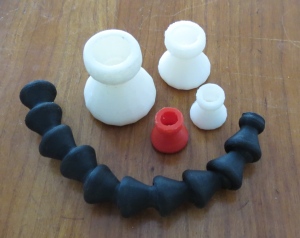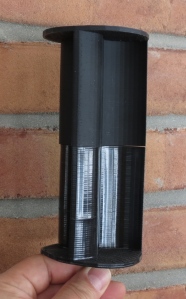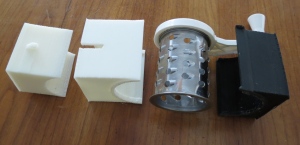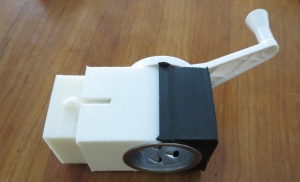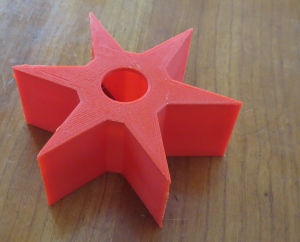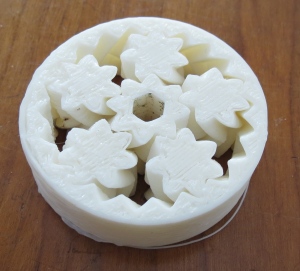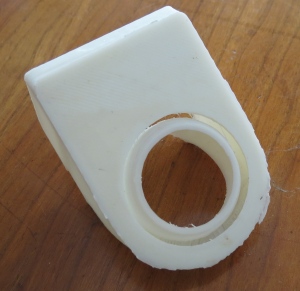It is easy to download 3D designs and print those objects. It is also easy to design and print small trivial objects (a lid for a cat food can). For my talk about 3D printing, I wanted to challenge myself to create an object that was new and complex. At one point, I imagined a four-sided white pyramid, which glowed from within with pulsing lights that changed colors and pulse patterns. The lights would be provided by red/green/blue LEDs, which would be powered by and controlled by an Arduino computer board.
This is the first prototype of the pyramid:
I first printed the pyramid on the right, with different geometrical shapes on each surface. I then decided to stick with four hemispheres, and tried to fabricate the pyramid out of four triangles that I printed separately. When the precision of the printed triangles was inadequate, I went back to printing the pyramid as a single part. The pyramid is hollow, as you can see, with small divots on the inside wall, in which I mounted the LEDs.
I printed a base, with a slot to hold the Arduino board, a recess on top to accept the pyramid, and a hole on the top to allow wires to enter the base of the pyramid. Lots of custom shapes!
This is the view from below just before final assembly:
And this is what it looks like when working:
Here is a video of the working lamp:
While this project is not spectacular in terms of either complexity or beauty, it does illustrate a few principles:
1) I had a dream and was able to realize it fairly quickly
2) the objects printed would have been impossible to create in a timely, cost effective manner without the 3D printer
3) I demonstrated the integration of “art”, 3D printing, electronics, and control software
All in all, I am quite pleased with the project. People who have seen it have been captivated. Or else I have very polite friends.

